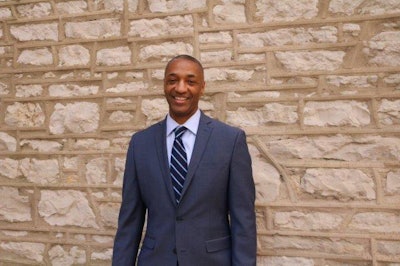What is a pandemic? A pandemic is a disease outbreak that is global in nature.
Pandemics are well-documented in the recorded history of humankind. The evolution of the coronavirus, or COVID-19, as a pandemic, represents a first. A brief review of other pandemics sets the stage for our current challenge while also providing lessons to inform an appropriate societal response.
 Dr. William F. Tate IV
Dr. William F. Tate IVA pandemic of the plague helped to end antiquity and escort in the Middle Ages. Another documented pandemic, referred to as the Black Death, emerged in Central Asia in the 1330s. It spread to ports all around the Mediterranean and further inland than it had 800 years before — reaching Scandinavia and far into the Arabian Peninsula. It occurred for over 150 years, but then slowly faded to irregular outbreaks, disappearing in Europe in the 1770s and a few decades later in the Near East. A third pandemic occurred in China in the latter half of the 1800s. This nameless pandemic reached significant proportions as it devastated Canton and Hong Kong. The disease made its way to the rest of the world, excluding, for the most part, Europe and the polar regions, but including the U.S.
Residents of the U.S. and the St. Louis region may possess greater name recognition with the four pandemics caused by the emergence of four novel influenza viruses over the past century. Caused by shifts in genetic identity, the first major strain, H1N1, is the name of the virus strain associated with the so-called Spanish flu pandemic of 1918. The 1918–1919 pandemic was the worst natural catastrophe of the 20th century, with an estimated mortality worldwide of 40–100 million. One report estimated that more than 200 million people were affected. H1N1 was the dominant strain found in humans until 1957.
H2N2, or Asian influenza, replaced H1N1 in 1957; it ignited a pandemic that killed an estimated one million people across the world. In 1968, a third virus shift appeared in Hong Kong as the H3N2 strain, which also resulted in approximately one million deaths worldwide. H3N2 is the strain presently spreading in human populations today.
Finally, in 1977, the fourth shift was a reoccurrence of an H1N1 strain. The 2009 pandemic warnings were associated with H1N1. These warnings may be impacting how many view the COVID-19 pandemic.
Let’s go back to the predictions in 2009. Some cautioned that one plausible scenario of the H1N1 virus included 30-50% of the U.S. population affected in the fall of 2009 and winter of 2010. Advisors warned that between 60-120 million people might produce symptoms with half of them seeking medical attention, and the latter pushing healthcare providers beyond their capacity to serve. We were fortunate and the outbreak was far less severe. And it would be natural for us to assume the COVID-19 pandemic will suffer the same fate. I join you in that hope.
However, the history of pandemics has a long arc. We can learn and use the research and guidance related to all four influenza pandemics to shape our response to COVID-19. The science of epidemiology calls for using the best available data in preparation for the worst-case scenarios. It is better to be overly prepared than to fall short. We fall short if our preparation fails to account for the most vulnerable in our region.
COVID-19 places individuals with heart disease, diabetes and lung disease at great risk of needing hospitalization. In relative terms, Blacks experience these chronic illnesses at higher rates than other demographic groups in the region. And in light of the country’s segregation, many of the most vulnerable reside in geographically concreted fashion.
One of the great concerns among epidemiologists is the ratio of hospital beds to the infected in need of hospitalization. For example, the Boston Globe reported that without mass closures and other interventions, more than 225,000 Massachusetts residents may require hospitalization — with more than a fifth, or 45,000, in need of intensive care. The latter group includes a disproportionately high percentage of patients with chronic illness. However, the state of Massachusetts has an average of 3,600 hospital beds and 400 ICU beds available.
Media coverage of other countries, including China and Italy, offer a glimpse into this problem. This challenge places great weight on following practices that “flatten the curve” or, stated differently, slow the infection rate.
Let’s deal with the myths associated with COVID-19 because they inhibit action.
The first myth involves the folly of posts circulating on social media suggesting Blacks cannot acquire the virus. Do Blacks “catch” colds or the flu? The virus is colorblind. Ask NBA player Rudy Gobert. He did not take the matter seriously. Infected with the virus, he put his team and his opponents at risk.
The second myth is people saying, “wait it out.” Some folks believe the summer warmth will halt the virus. Unfortunately, unlike past influenza viruses, the COVID-19 is not projected to take a summer vacation. Marc Lipsitch, an epidemiologist at Harvard University, notes that new viruses have a temporary but important asset for survival — we lack immunity to them. Thus, a new virus can spread outside seasonable boundaries in ways that well-established viruses typically don’t.
We have one option: flatten the curve. How do we slow COVID-19?
Social distancing is the water to put out this fire. Cancel public events. Close schools and colleges. Limit travel. Telecommute to work. Maintain physical distance. Watch church online; this is a culturally sensitive matter. However, if you love your neighbor, then act in a fashion to slow the spread of this virus. The CDC generated a list of interventions and tools to support communities, organizations and higher education.
I recognize the inconvenience for some and the hardship for others to engage in social distancing. Let’s flatten the curve. Be the solution.
Dr. William F. Tate IV, Dean and Vice Provost for Graduate Education; Edward Mallinckrodt Distinguished Professor in Arts & Sciences; and Faculty Scholar, Institute for Public Health, Washington University in St. Louis. This article is adapted from his essay titled “Pandemic Preparedness: Using Geospatial Modeling to Inform Policy in Systems of Education and Health in Metropolitan America” published by Rowan and Littlefield.


















